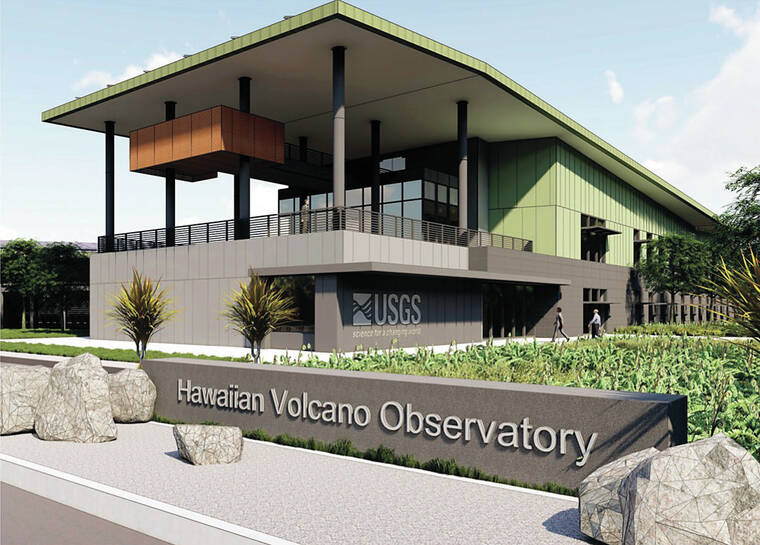A proposed new site for the Hawaiian Volcano Observatory near the University of Hawaii in Hilo’s campus would allow for greater opportunities for geology students, HVO staff said.
The U.S. Geological Survey’s former HVO facility within Hawaii Volcanoes National Park was critically damaged during the 2018 Kilauea eruption, stranding the scientists in offices at the Hilo Iron Works building ever since.
But plans for a new 60,000-square-foot facility on state land at the intersection of Komohana and Nowelo streets in Hilo are taking shape, and could provide for more partnerships between the observatory and university faculty and staff.
“The idea is that there will be greater access for people at UH-Hilo,” said David Phillips, HVO deputy scientist-in-charge, at an open house Wednesday. “Giving our staff and research greater accessibility and exposure among students should bring a lot of exciting opportunities.”
HVO Scientist-in-Charge Ken Hon said USGS will lease the 6.8-acre parcel from UH-Hilo, and HVO will share the facility with the Pacific Island Ecosystems Research Center, another USGS division.
Bob Reed, acting director for PIERC, said both divisions will be able to work with UH students more closely than they can currently. PIERC’s current facility is located within HVNP.
“It will be easier to have students come here,” Reed said. “Right now, we have summer internships, but that’s still an hour-long drive, and you can’t really have students coming here for a lab and then going back to campus for classes.”
Meanwhile, Hon and Reed both agreed that a new, modern facility will be a significant improvement to both divisions’ current situations.
HVO is divided between offices in Hilo and warehouse space in Keaau, and Reed said the HVNP facility doesn’t have sufficient laboratory space.
“It’s going to be great to have our genetics team together in one modern lab,” Reed said.
USGS architect Martin Smith said the new facility — designed by Honolulu firm AHL — will consist of two buildings: a three-story research facility containing laboratories and office space for about 80 people — which he said should support the full staffs of both HVO and PIERC — and a warehouse that will provide equipment and sample storage space.
HVO and PIERC would each occupy one floor of the research building.
The facility will also include space for a ground-mounted solar array, so that the building will be compliant with the state’s goal of having all government buildings be completely carbon-neutral by 2030.
The project was funded in 2019 through a disaster supplemental relief bill that allocated $49 million for construction of the facility.
Smith said construction is estimated to take about 26 months, with a completion date around the middle of 2025.
A draft environmental assessment was published in February, and the final EA is expected to be published in May.
A 30-day public comment period regarding the project is ongoing until March 28.
The draft EA can be found at tinyurl.com/2p9akfp3.
Comments can be submitted at tinyurl.com/2mwthtrr.
Email Michael Brestovansky at mbrestovansky@hawaiitribune-herald.com.






